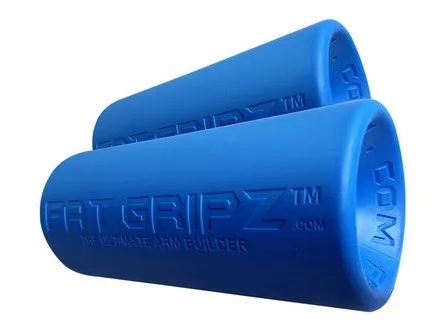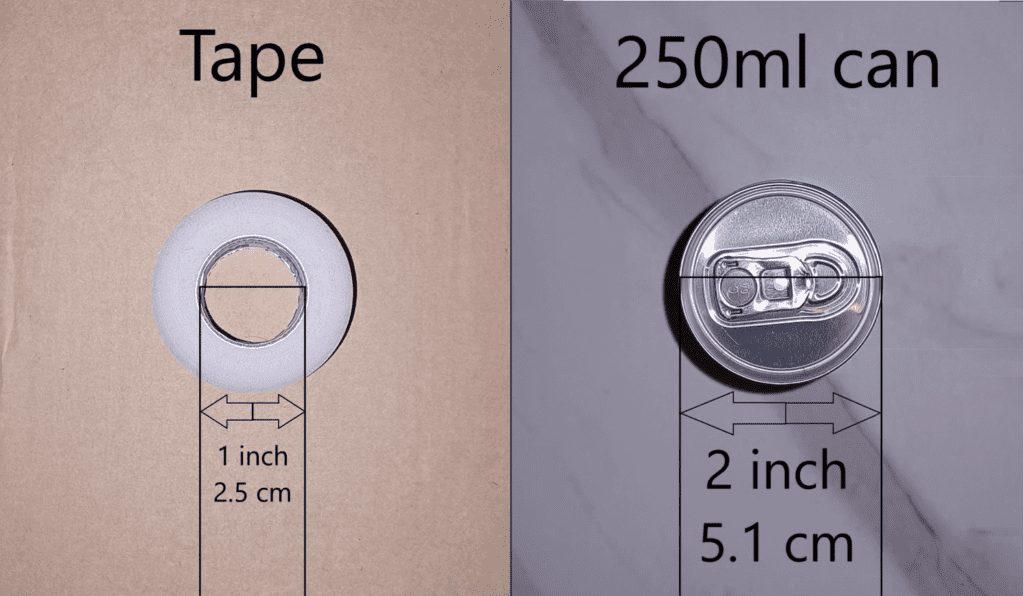A few years ago there was a fitness fad involving a product called Fat Gripz. They were rubber-like grips that you can slide onto a regular barbell or dumbbell to increase the width of the bar. Why would you want to do that? A thicker bar increases forearm activation and improves both grip strength and forearm size. The only problem is they retail at around £30. Luckily, I can show you how to do it cheaper. Much cheaper.

The Original Product: Fat Gripz
Marketed as the “ultimate arm builder”, Fat Gripz gradually rose in popularity from 2010, peaking in December 2012. The idea was simple – create a portable product that allows you to turn a standard 1 inch diameter bar into an axle bar. Axle bars (also called “thick bars” or “fat bars”) are a product in themselves, used mainly by strongmen.

Fat Gripz are made from a compound similar to heavy duty rubber. The original product currently retails at £26, though you can find generic “barbell grips” online for half that price. By attaching a pair of Fat Gripz you can turn a 1 inch (25mm) bar into a 2 inch (51mm) bar.

The Alternative: Pipe Insulation
Now it may be that you’d rather splash out on the real thing. However, if you are thrifty and wish to get a similar effect for far less money, read on.
Most hardware stores will sell a product called pipe insulation, sometimes referred to as pipe lagging. Its primary use is to protect a building’s plumbing system, by fitting over the pipes. See where I’m going with this?
By design, it fits a certain diameter pipe, and comes with a seam to easily slip it on and off. By selecting the pipe insulation that corresponds to the diameter of your barbell or dumbbells, you have a well-fitted alternative.

The above image is the first example I found online, where a 1 metre section sets you back £4.00. You will typically need no more than 12.5cm per hand, meaning you can make 4 pairs of grips with this 1 metre section.
The primary use I found for them is to increase the diameter while gripping with my hands. In the above example, 15mm indicates the thickness of the foam wall. That means the bar becomes 15mm + 25mm + 15mm = 55mm, slightly more than 2 inches. However, these aren’t as firm, and so once you grip it you’re likely to get closer to the 51mm of standard thick bars.

I’ve since found multiple other uses for them as a bar protector. The first of those is for hip thrusts, an exercise popularised by Brett “The Glute Guy” Contreras. The second of those is for Nordic Curls, an excellent exercise for reducing the risk of hamstring injuries in athletes.
In the image below I’m using 18mm thick pipe insulation for hip thrusts, where the weight can be in the hundreds of kilograms. Nordic Curls are a body-weight exercise, so here I’m using 10mm insulation. Prices vary by thickness, but even the thickest pipe insulation will only set you back around £6.00 per metre, meaning £.150 per pair.

As I say, after trying this out you may feel like investing in the more professional version. This is particularly true if you exercise in a public gym and don’t want to be seen with pipe insulation. However, if like myself you have a home gym, these are an easy to use and cheap accessory for many exercises. Enjoy!

